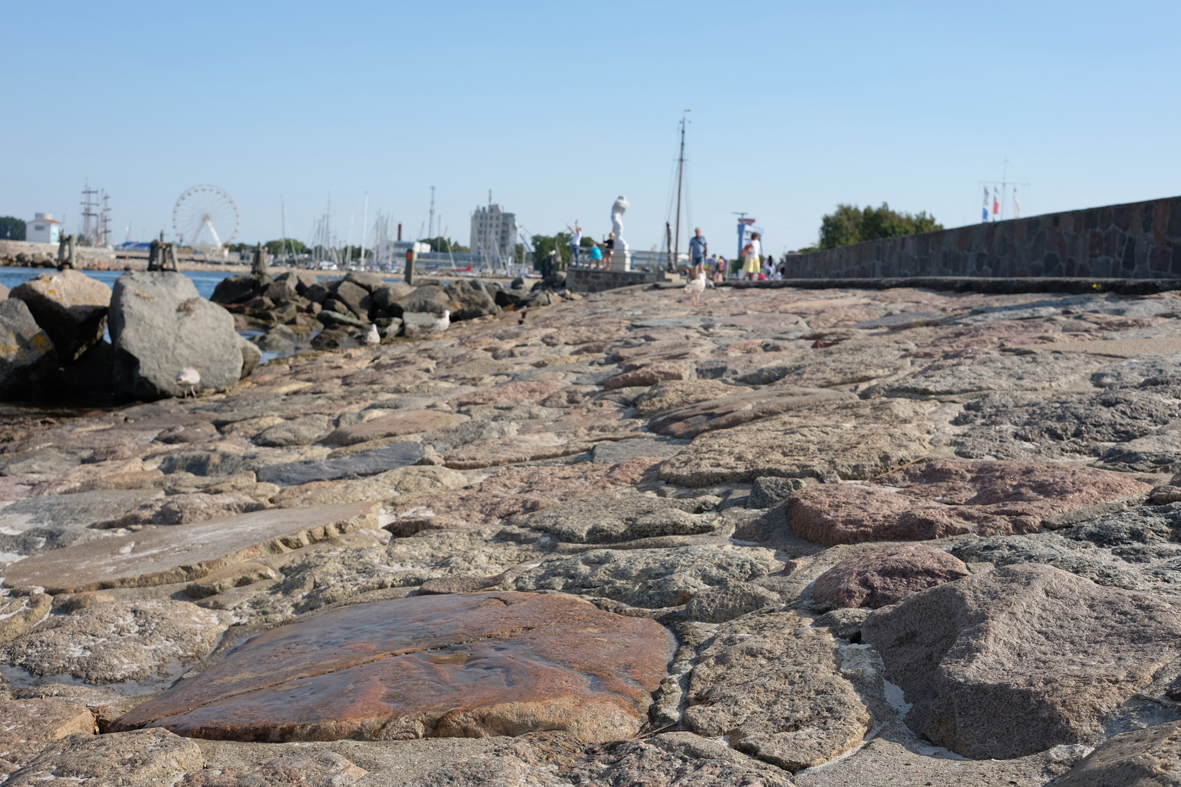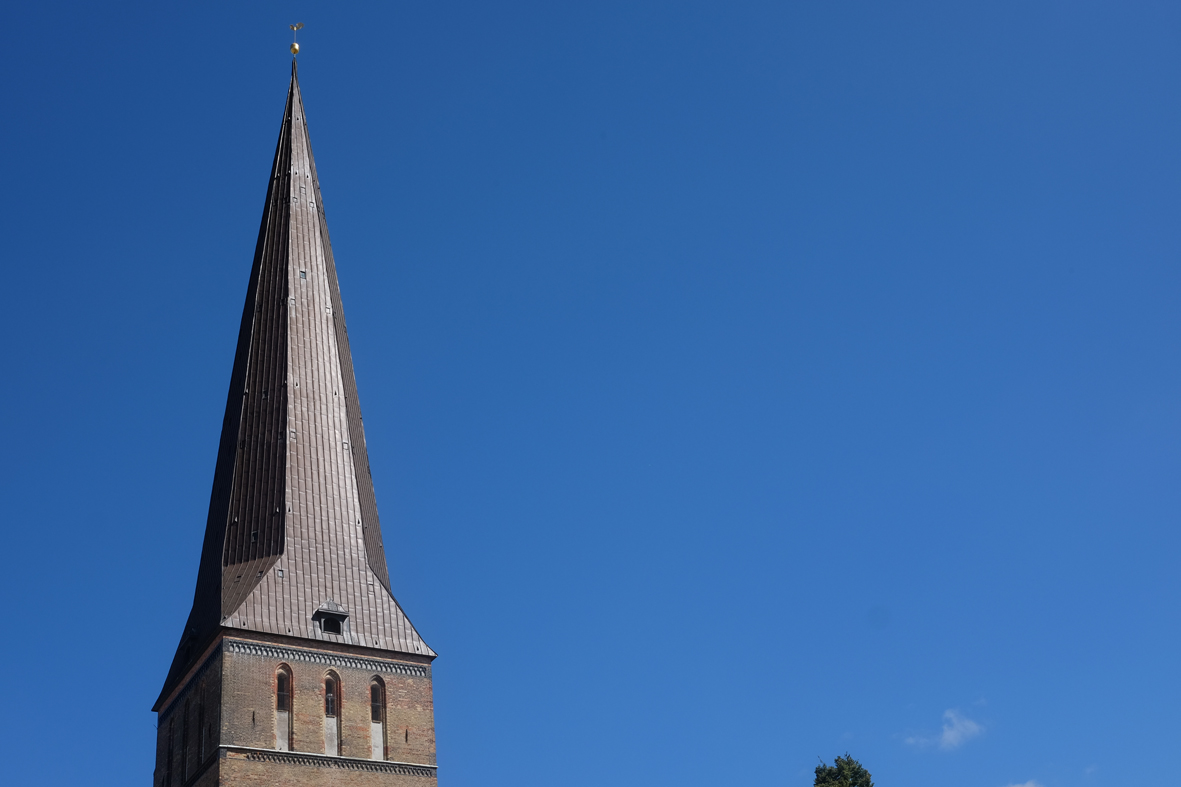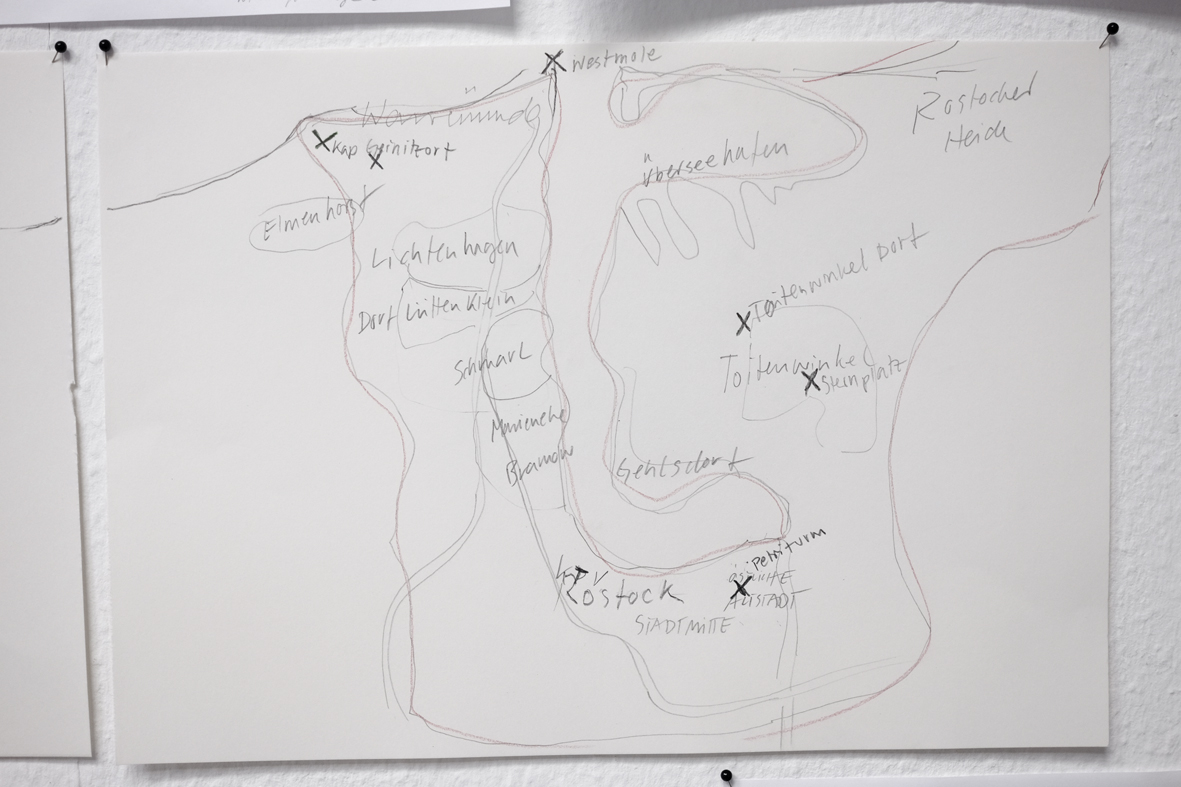WIND HARP (WINDHARFE)
Electroacoustic performance; Part of the ongoing project "wind" (since 2018)
Birch multiplex varnished, strings, ebony, weather protection made of sheet steel, 80 x 20 x 6 cm; ebow

The wind or aeolian harp was an object of great fascination in the 19th century. In the Romantic and Biedermeier era, it represented the man-made apparatus that,
with the help of the wind, produces sounds that demonstrate a harmony that people seem to long for. As part of the studio grant from the Hanseatic City of Rostock,
Anna Schimkat developed wind harps, which she placed at various locations in the city in order to be able to record the sounds in and around them. These recordings,
together with the wind noise archive and a self-made wind tube excited with an Ebow, were transferred to a spatial concert composition at the University of Music
and Theater in Rostock.
Location of recording:
Dorf Toitenwinkel, neben einem Einfamilienhaus und am Eingang des Sternplatzes, auf Empfehlung der Ansässigen, da dort der Wind immer durch pfeift. Klingt der Wind
in Toitenwinkel Dorf anders als in der Plattenbausiedlung?
The village of Toitenwinkel was founded in the 13th century. In the GDR period, Rostock was a GDR district town from 1952 to 1990 and was systematically expanded by new urban areas until it grew to over 250,000 inhabitants.
For this purpose, the surrounding villages were incorporated and expanded by large prefabricated housing estates. The Toitendorf settlement was built between 1987 and 1995 for 27,000 people.
In 2018, Toitenwinkel had around 14,000 inhabitants. In the 2017 federal election, around a quarter of those entitled to vote voted for the AfD (Alternative für Deutschland – german right wing party), which means that it
currently has the majority in the north-eastern part of the city. The former Sky market a few hundred meters away from the new location outside the district has been empty since 2015. The unadorned square, the "Friedensforum"
(or "Sternplatz"), is surrounded by small shops that opened with the Sky market and have now partially had to close again. The recording was taken at the village of Toitenwinkel, next to a detached
house and at the entrance to Sternplatz, on the recommendation of the locals, as the wind always blows through there.
Does the wind in Toitenwinkel Dorf sound different than in the prefabricated housing (Plattenbau) estate?


Location of recording:
Stone of the "Blagmantelschen" in the fortification wall of the west pier/Warnemünde.
According to legend, a woman "in the blue coat" threw herself into the river after being pregnant by a French soldier (1806-1813 a detachment
of the Napoleonic army was near Warnemünde). Since then she has had to wander around as a ghost. During the construction of the pier in 1896,
workers discovered a female figure in a blue coat in the stone in the western pier.
Can you hear the spook in the wind?

Location of recording:
Petri Tower of the Petri Church.
Eastern Old Town. The highest point in Rostock. The tower has been destroyed several times in its history by lightning and war.
On the initiative of the citizenry, it was rebuilt for the second time in the 1990s. The Petrikirche became Protestant with Rostock
in 1531. The reformer Joachim Slüters worked from the Petri community. When many people gathered for justice and freedom in the GDR
in autumn 1989 and began to demonstrate together in many cities, the people of Rostock met for prayers in the Petrikirche before their
marches through the city center. Does the wind tell the story of the place?


Other locations on the Baltic Sea:
- Kap Gneinitzort
- Elmenhorst
- Kägsdorf
- Riedensee
CLICK: Audiosample


Thank you:
Sarah Linke from the City of Rostock
Jürgen Opel
Das Team der Theaterwerkstatt Rostock
Christiane Vogt
Frank Ivemeyer
Holger Stark
Olaf Kirsch vom Museum für Kunst und Gewerbe Hamburg